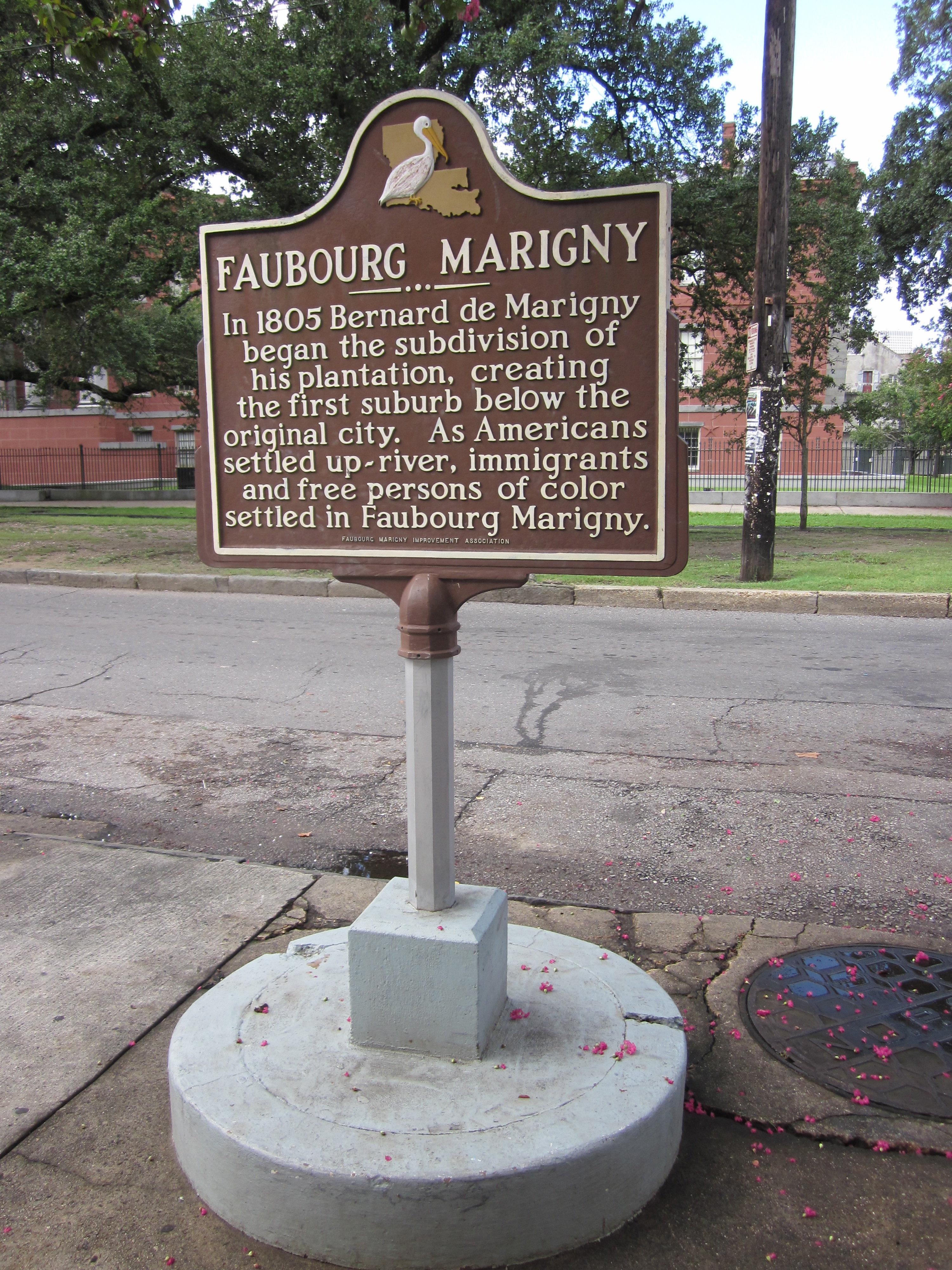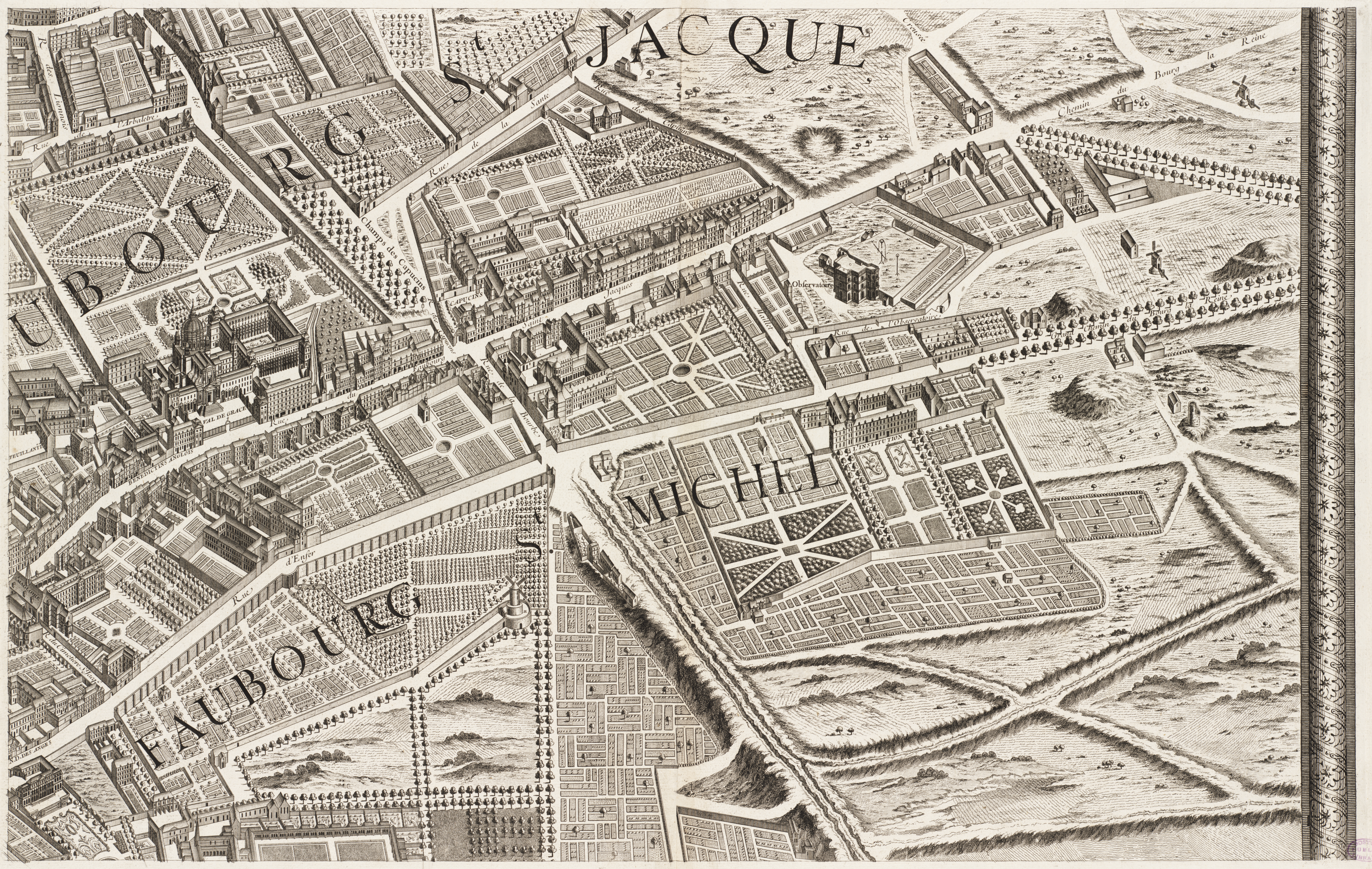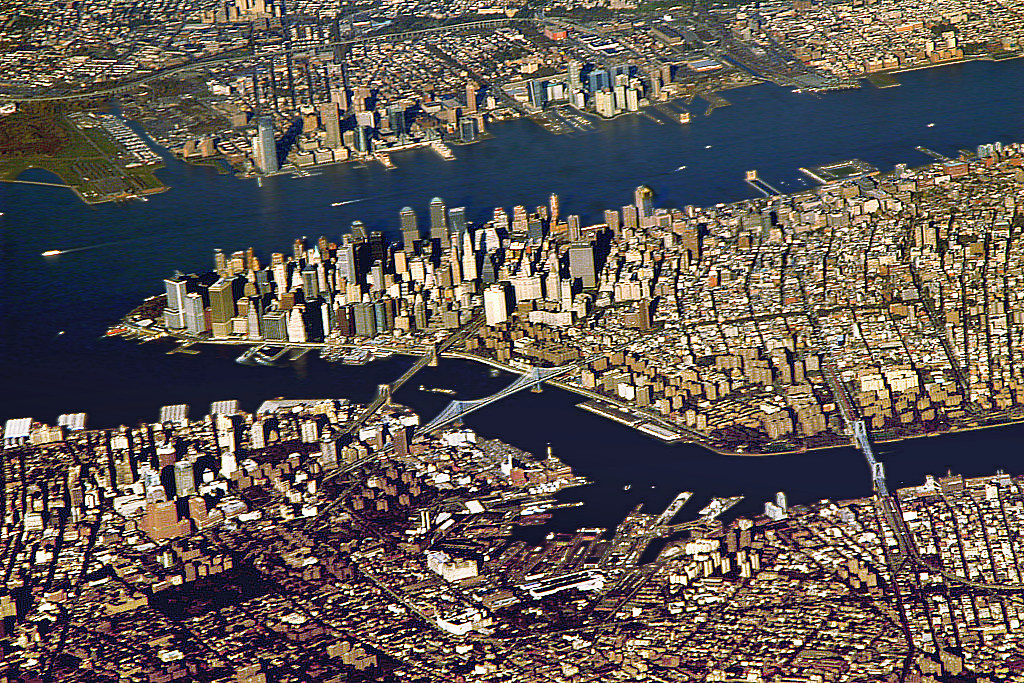|
St. Roch, New Orleans
St. Roch is a neighborhood of the U.S. city of New Orleans. A subdistrict of the Bywater District Area, its boundaries as defined by the City Planning Commission are: Lafreniere Street, Paris Avenue, I-610, Benefit Street, and Dahlia Walk to the north; People's and Almonaster Avenues to the east; St. Claude Avenue to the south; Elysian Fields Avenue, Hope, Frenchmen, Duels, St. Anthony, Industry, Allen, & Agriculture Streets, A.P. Tureaud Avenue, Abundance, Republic, Treasure, & Dugue Streets, and Florida & St. Bernard Avenues to the west. History The city of New Orleans was founded by the French in the early 1700s, ruled for 40 years by the Spanish, and declared territory of the United States in 1803 with the Louisiana Purchase. New Orleans is known for its Creole culture and history. During the Spanish period, starting in 1763, the laws allowed for a free people of color or gens de colour. Being near many waterways, New Orleans was able to easily import and export goods ... [...More Info...] [...Related Items...] OR: [Wikipedia] [Google] [Baidu] |
Roch
Roch (lived c. 1348 – 15/16 August 1376/79 (traditionally c. 1295 – 16 August 1327, also called Rock in English, is a Catholic saint, a confessor whose death is commemorated on 16 August and 9 September in Italy; he is especially invoked against the plague. He has the designation of Rollox in Glasgow, Scotland, said to be a corruption of Roch's Loch, which referred to a small loch once near a chapel dedicated to Roch in 1506. He is a patron saint of dogs, invalids, falsely accused people, bachelors, and several other things. He is the patron saint of Dolo (near Venice) and Parma, as well as Casamassima, Cisterna di Latina and Palagiano (Italy). He is also the patron saint of the town of Albanchez, in Almeria, southern Spain. Saint Roch is known as "São Roque" in Portuguese, as "Sant Roc" in Catalan, as "San Roque" in Spanish (including in former colonies of the Spanish colonial empire such as the Philippines) and as "San Rocco" in Italian. Etymology Roch is given diffe ... [...More Info...] [...Related Items...] OR: [Wikipedia] [Google] [Baidu] |
Free People Of Color
In the context of the history of slavery in the Americas, free people of color (French: ''gens de couleur libres''; Spanish: ''gente de color libre'') were primarily people of mixed African, European, and Native American descent who were not enslaved. However, the term also applied to people born free who were primarily of black African descent with little mixture. They were a distinct group of free people of color in the French colonies, including Louisiana and in settlements on Caribbean islands, such as Saint-Domingue (Haiti), St. Lucia, Dominica, Guadeloupe, and Martinique. In these territories and major cities, particularly New Orleans, and those cities held by the Spanish, a substantial third class of primarily mixed-race, free people developed. These colonial societies classified mixed-race people in a variety of ways, generally related to visible features and to the proportion of African ancestry. Racial classifications were numerous in Latin America. A freed ... [...More Info...] [...Related Items...] OR: [Wikipedia] [Google] [Baidu] |
Dairy
A dairy is a business enterprise established for the harvesting or processing (or both) of animal milk – mostly from cows or buffaloes, but also from goats, sheep, horses, or camels – for human consumption. A dairy is typically located on a dedicated dairy farm and milk or in a section of a multi-purpose farm (mixed farm) that is concerned with the harvesting of milk. As an attributive, the word ''dairy'' refers to milk-based products, derivatives and processes, and the animals and workers involved in their production: for example dairy cattle, dairy goat. A dairy farm produces milk and a dairy factory processes it into a variety of dairy products. These establishments constitute the global dairy industry, part of the food industry. Terminology Terminology differs between countries. In the United States, for example, an entire dairy farm is commonly called a "dairy". The building or farm area where milk is harvested from the cow is often called a "milking parlor" or "p ... [...More Info...] [...Related Items...] OR: [Wikipedia] [Google] [Baidu] |
Blacksmith
A blacksmith is a metalsmith who creates objects primarily from wrought iron or steel, but sometimes from #Other metals, other metals, by forging the metal, using tools to hammer, bend, and cut (cf. tinsmith). Blacksmiths produce objects such as gates, grilles, railings, light fixtures, furniture, sculpture, tools, agricultural implements, decorative and religious items, cooking utensils, and weapons. There was an historical distinction between the heavy work of the blacksmith and the more delicate operation of a whitesmith, who usually worked in Goldsmith, gold, Silversmith, silver, pewter, or the finishing steps of fine steel. The place where a blacksmith works is called variously a smithy, a forge or a blacksmith's shop. While there are many people who work with metal such as farriers, wheelwrights, and Armourer, armorers, in former times the blacksmith had a general knowledge of how to make and repair many things, from the most complex of weapons and armor to simple things ... [...More Info...] [...Related Items...] OR: [Wikipedia] [Google] [Baidu] |
Baseball
Baseball is a bat-and-ball sport played between two teams of nine players each, taking turns batting and fielding. The game occurs over the course of several plays, with each play generally beginning when a player on the fielding team, called the pitcher, throws a ball that a player on the batting team, called the batter, tries to hit with a bat. The objective of the offensive team (batting team) is to hit the ball into the field of play, away from the other team's players, allowing its players to run the bases, having them advance counter-clockwise around four bases to score what are called " runs". The objective of the defensive team (referred to as the fielding team) is to prevent batters from becoming runners, and to prevent runners' advance around the bases. A run is scored when a runner legally advances around the bases in order and touches home plate (the place where the player started as a batter). The principal objective of the batting team is to have ... [...More Info...] [...Related Items...] OR: [Wikipedia] [Google] [Baidu] |
American Civil War
The American Civil War (April 12, 1861 – May 26, 1865; also known by other names) was a civil war in the United States. It was fought between the Union ("the North") and the Confederacy ("the South"), the latter formed by states that had seceded. The central cause of the war was the dispute over whether slavery would be permitted to expand into the western territories, leading to more slave states, or be prevented from doing so, which was widely believed would place slavery on a course of ultimate extinction. Decades of political controversy over slavery were brought to a head by the victory in the 1860 U.S. presidential election of Abraham Lincoln, who opposed slavery's expansion into the west. An initial seven southern slave states responded to Lincoln's victory by seceding from the United States and, in 1861, forming the Confederacy. The Confederacy seized U.S. forts and other federal assets within their borders. Led by Confederate President Jefferson ... [...More Info...] [...Related Items...] OR: [Wikipedia] [Google] [Baidu] |
Lake Pontchartrain
Lake Pontchartrain ( ) is an estuary located in southeastern Louisiana in the United States. It covers an area of with an average depth of . Some shipping channels are kept deeper through dredging. It is roughly oval in shape, about from west to east and from south to north. In descending order of area, the lake is located in parts of six Louisiana parishes: St. Tammany, Orleans, Jefferson, St. John the Baptist, St. Charles, and Tangipahoa. The water boundaries were defined in 1979 (see list of parishes in Louisiana). The lake is crossed by the Lake Pontchartrain Causeway, the longest continuous bridge over water in the world. A power line also crosses the lake. Its towers stand on caissons in Lake Pontchartrain, and its length can be used to visually demonstrate the curvature of the earth. Toponymy Lake Pontchartrain is named for , . He was the French Minister of the Marine, Chancellor, and Controller-General of Finances during the reign of France's "Sun King" ... [...More Info...] [...Related Items...] OR: [Wikipedia] [Google] [Baidu] |
Milneburg
Milneburg was a town on the southern shore of Lake Pontchartrain in Louisiana that was absorbed into the city of New Orleans. A neighborhood to the south of this area is still sometimes known by this name; the former location of Milneburg is now in the Lake Terrace/Lake Oaks, New Orleans section, mostly under the current campus of the University of New Orleans. History Milneburg was named for landowner-developer Alexander Milne. However local pronunciation came to call it "Mill-en-burg" or "Mil-lan-burg" instead of "Miln-burg", and the name has often been seen in print misspelled Milenberg and variations. Early on it was officially designated Port Pontchartrain, but the "Milneburg" name soon replaced this for all uses except for United States Coast Guard designation of the lighthouse there, which continued to be listed as "Port Pontchartrain Lighthouse" to 1929. In the early 19th century Milneburg was connected to the city of New Orleans, which was then limited to the rive ... [...More Info...] [...Related Items...] OR: [Wikipedia] [Google] [Baidu] |
Faubourg Marigny
The Faubourg Marigny ( ; sometimes called The Marigny) is a neighborhood of the city of New Orleans, Louisiana, United States. Its boundaries, as defined by the City Planning Commission, are North Rampart Street and St. Claude Avenue to the north, the railroad tracks along Homer Plessy Way (formerly Press Street) to the east, the Mississippi River to the south, and Esplanade Avenue to the west. Geography The Faubourg Marigny is located at and has an elevation of . According to the United States Census Bureau, the district has a total area of . of which is land and (6.06%) of which is water. In the 19th century, the Faubourg Marigny was the old Third Municipality of New Orleans. The triangular area between Esplanade and Elysian Fields Avenue is sometimes called the ''Marigny Triangle'' and is part of the 7th Ward of New Orleans. The remainder is in the 8th and 9th wards of New Orleans. Adjacent neighborhoods * Seventh Ward (north) * St. Roch (north) * Bywater (ea ... [...More Info...] [...Related Items...] OR: [Wikipedia] [Google] [Baidu] |
Pontchartrain Railroad
Pontchartrain Rail-Road was the first railway in New Orleans, Louisiana. Chartered in 1830, the railroad began carrying people and goods between the Mississippi River front and Lake Pontchartrain on 23 April 1831. It closed more than 100 years later. The long gauge line connected the Faubourg Marigny neighborhood of New Orleans along the riverfront with the town of Milneburg on the Lakefront. When built, the majority of the distance of the route between neighborhoods at either end of the route was a mixture of farmland, woods, and swamp. The route of the railway ran down the center of Elysian Fields Avenue. It was the third common carrier railroad to officially open for service to the public in the United States, following the Baltimore and Ohio and the South Carolina Canal and Rail Road Company. Early history Meetings discussing building a railway between the river and lake began in 1828. The Pontchartrain Rail-Road was chartered on 20 January 1830. The right-of-way was a ... [...More Info...] [...Related Items...] OR: [Wikipedia] [Google] [Baidu] |
Faubourg
"Faubourg" () is an ancient French term historically equivalent to " fore-town" (now often termed suburb or ). The earliest form is , derived from Latin , 'out of', and Vulgar Latin (originally Germanic) , 'town' or 'fortress'. Traditionally, this name was given to an agglomeration forming around a throughway leading outwards from a city gate, and usually took the name of the same thoroughfare within the city. As cities were often located atop hills (for defensive purposes), their outlying communities were frequently lower down. Many faubourgs were located outside the city walls, and "suburbs" were further away from this location (, "below"; , "city"). Faubourgs are sometimes considered the predecessor of European suburbs, into which they sometimes evolved in the 1950s and 1960s, while others underwent further urbanisation. Although early suburbs still conserved some characteristics related to faubourgs (such as the back alleys with doors, little break margins for houses), late ... [...More Info...] [...Related Items...] OR: [Wikipedia] [Google] [Baidu] |
Port
A port is a maritime facility comprising one or more wharves or loading areas, where ships load and discharge cargo and passengers. Although usually situated on a sea coast or estuary, ports can also be found far inland, such as Hamburg, Manchester and Duluth; these access the sea via rivers or canals. Because of their roles as ports of entry for immigrants as well as soldiers in wartime, many port cities have experienced dramatic multi-ethnic and multicultural changes throughout their histories. Ports are extremely important to the global economy; 70% of global merchandise trade by value passes through a port. For this reason, ports are also often densely populated settlements that provide the labor for processing and handling goods and related services for the ports. Today by far the greatest growth in port development is in Asia, the continent with some of the world's largest and busiest ports, such as Singapore and the Chinese ports of Shanghai and Ning ... [...More Info...] [...Related Items...] OR: [Wikipedia] [Google] [Baidu] |









